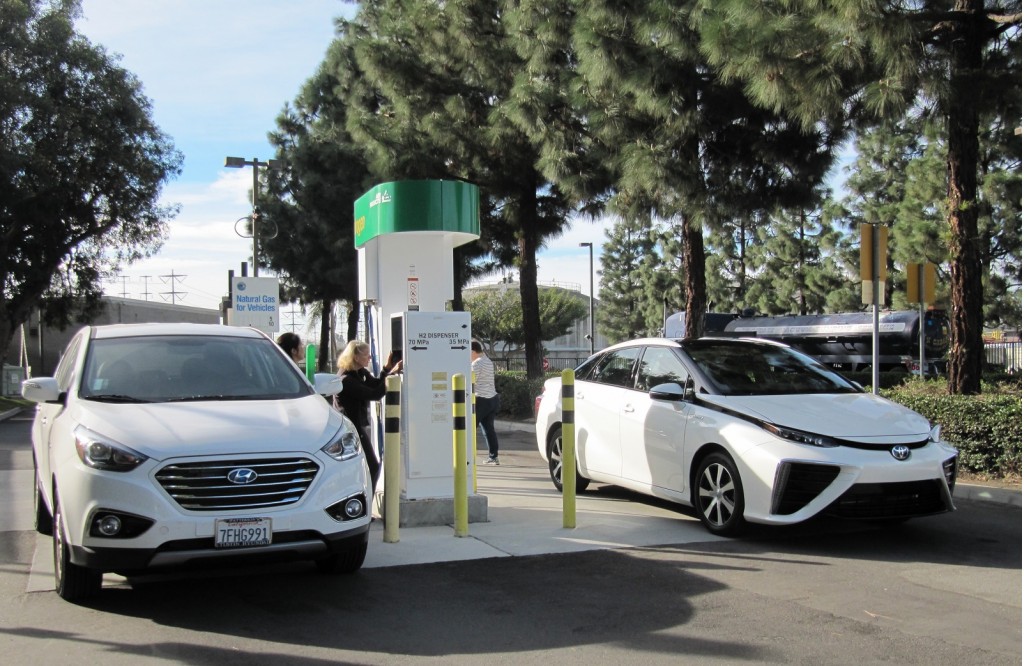When the first Honda Insight and Toyota Prius hybrids launched in 1999 and 2000, expectations for their sales were low.
And hybrids indeed logged annual sales in the low thousands until the second-generation Prius came along for 2004.
But the sales numbers for the earliest hybrids look stratospheric compared to the projections for sales of hydrogen fuel-cell cars in their first few years.
DON'T MISS: Electric Cars: Some Are Real, Most Are Only 'Compliance Cars'--We Name Names
Toyota has said it plans to make 700 of its Mirai fuel-cell model for the 2016 model year--for all markets--and boost that number to 2,000 next year and 3,000 the year after.
The car's chief engineer, Yoshikazu Tanaka, told industry trade journal Automotive News in April that 3,000 is the limit on annual Mirai production until a "drastic technological revolution" could be achieved.
The challenge is the process of etching the conduits on each of the 370 cells--which are only 1.3 millimeters thick--that make up the Mirai's fuel cell stack.

2016 Toyota Mirai construction at Motomachi plant
Still, the company hopes to sell 3,000 Mirais in the U.S. between now and the end of 2017. That represents more than half of total production.
Of the first-year production of 700 cars, 300 are dedicated to the U.S. and European markets.
The first Mirai is expected to be delivered this month to a buyer within a few specific regions of California where nearby hydrogen fueling stations are open and operating.
ALSO SEE: 10 Questions On Hydrogen Fuel-Cell Cars To Ask Toyota, Honda & Hyundai
Toyota has said it expects Mirai sales to grow to a total of 30,000 units by 2020, when the world's attention is focused on the Tokyo Olympic Games.
Of those, 12,000 will be for the Japanese domestic market.
Meanwhile, the 2017 Honda Clarity Fuel Cell mid-size sedan was launched last week at the Tokyo Motor Show.

Honda Clarity Fuel Cell, 2015 Tokyo Motor Show
Honda plans to put it on sale in Japan, limited regions of the U.S., and other markets over the next year.
But the car's chief engineer, Kiyoshi Shimizu, was quoted in the Japan Times as saying that the company initially planned to sell only 200 units a year of the Clarity in Japan.
The first year's production run for the country has been entirely booked by government agencies and corporate fleets, he said.
If Japan, with its growing hydrogen fueling infratructure, represents perhaps 40 percent of early Clarity sales, that might indicate a production run of 500 to 1,000 cars a year.

fcx clarity fuelcell motorauthority 007 1
That's certainly higher than the 200 units over six years for the car's predecessor, the Honda FCX Clarity, but hardly in the same league as early Insight hybrid sales.
The California market is key to Toyota and Honda, which sells large volumes of gasoline vehicles there.
The state has had zero-emission vehicle (ZEV) sales rules in place for both makers since 2012, in which about 1 percent of their in-state sales must be battery-electric or fuel-cell vehicles.
Two so-called "compliance cars," the Honda Fit EV and Toyota RAV4 EV, sold 1,100 and 2,600 copies respectively to meet the first portion of those goals. Both have now been taken off sale.
But even the extremely low U.S. volumes of hydrogen-powered cars will be high enough to meet the "ZEV rules" through 2018.
Hydrogen cars with a range of 300 miles, and full refueling in less than 10 minutes, get more ZEV credits per car than do battery-electric cars with similar range, because battery recharging takes longer.

2015 Hyundai Tucson Fuel Cell, 2016 Toyota Mirai at hydrogen fueling station, Fountain Valley, CA
So until something like 2020, we'd suggest it's safe to call any hydrogen fuel-cell vehicle sold in the U.S. a "compliance car."
That means, simply, a car sold in limited markets and at volumes just high enough to let the maker meet California's rules requiring sales of zero-emission vehicles.
The volumes in those rules start to ramp up in 2018, however, with the number of zero-emission vehicles to be sold rising steadily each year after that.
By 2018 to 2020, some estimates suggest that plug-in vehicles could represent 5 to 10 percent of total California car sales.
But by then, Toyota at least seems to expect that fuel-cell production technology will be sufficiently advanced--and that California's fueling infrastructure will have grown adequately--so that hydrogen vehicle sales will meet all its zero-emission requirements.
It promises to be a fascinating effort to watch.
_______________________________________













